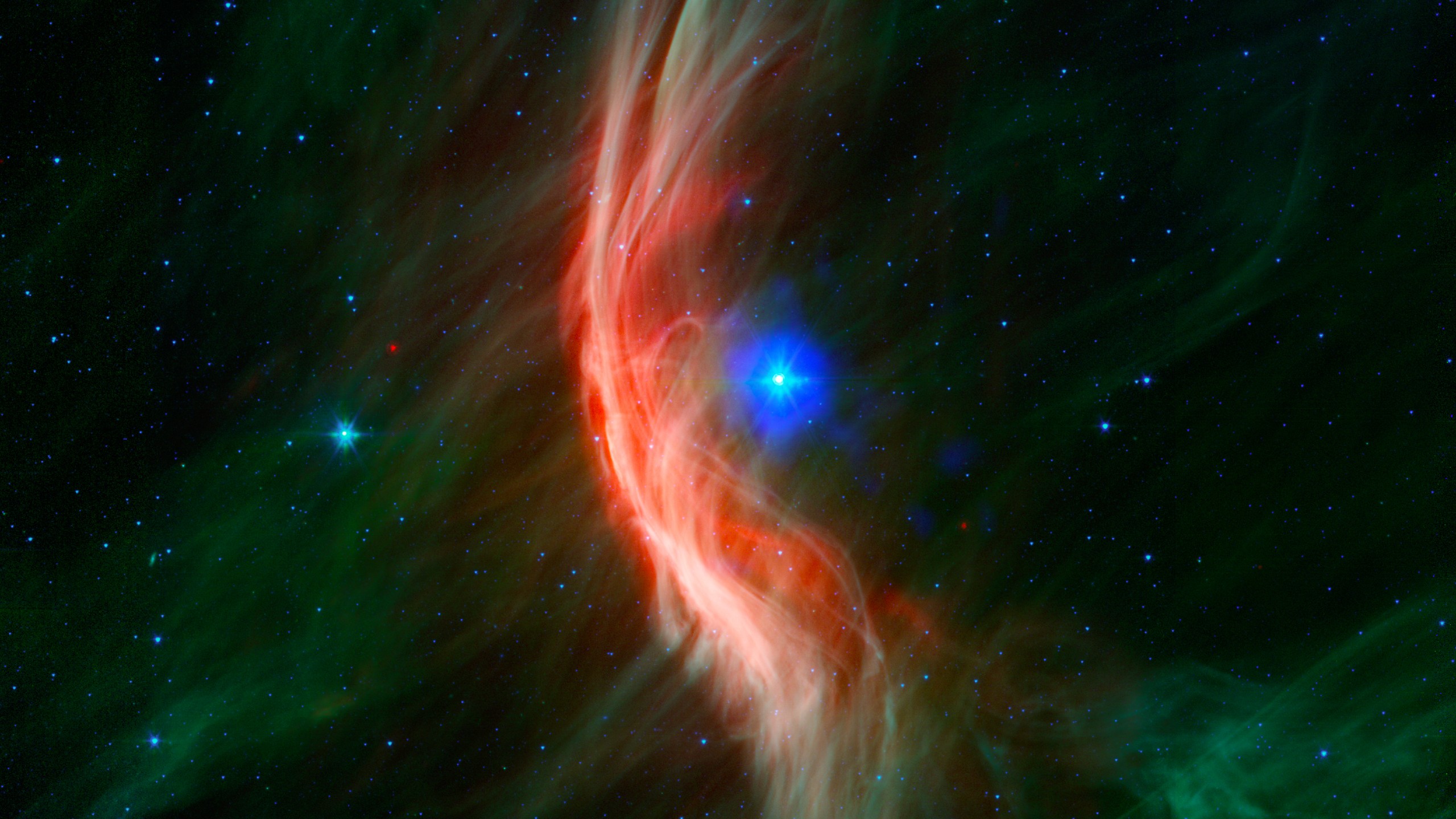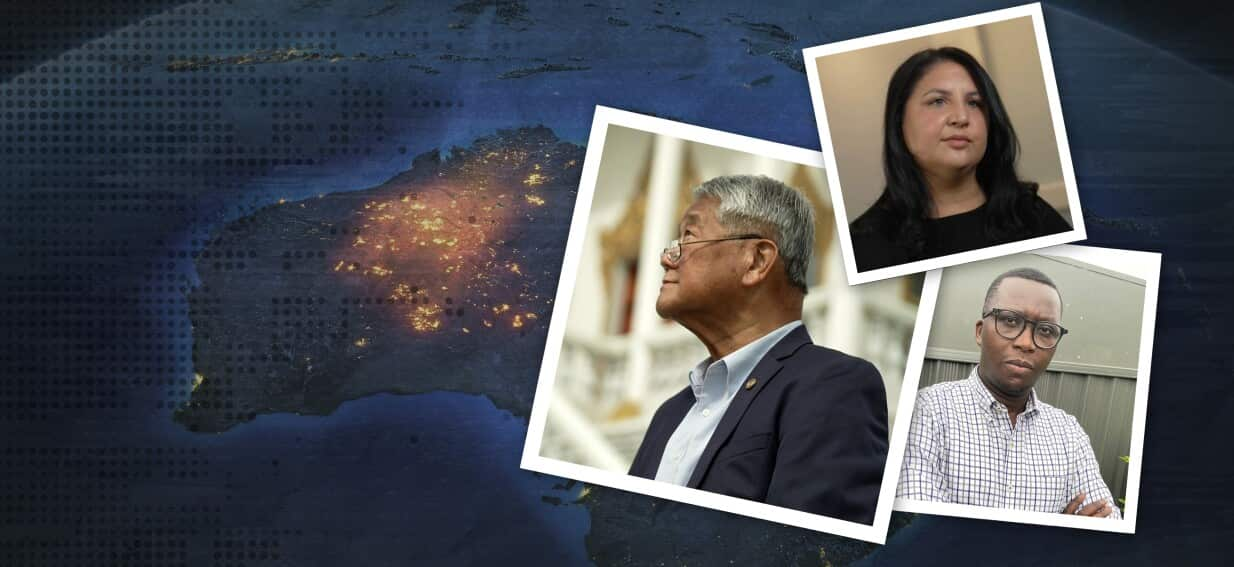Decades ago physicists realized that gravitational waves are no mere passing phenomenon. Instead those ripples in space should leave behind permanent marks: a fixed distortion in their wake. So far this “memory” effect has remained undetected, but the next generation of gravitational-wave detectors should be able to find them. And if they do, it will open up a new avenue to testing our understanding of gravity.
Memories of Einstein
In 1916 Albert Einstein himself predicted the existence of gravitational waves as a consequence of his general theory of relativity. These vibrations in space itself would ripple out from masses experiencing any kind of asymmetrical acceleration. Examples for gravitational-wave sources include stars exploding, black holes merging and even a person spinning around in their office chair! But gravity is by far the weakest of the forces, and gravitational waves are just tiny wrinkles on top of that. Einstein ultimately concluded that although they existed, they were unlikely to ever be detected.
On supporting science journalism
If you’re enjoying this article, consider supporting our award-winning journalism by subscribing. By purchasing a subscription you are helping to ensure the future of impactful stories about the discoveries and ideas shaping our world today.
Almost a century later a team of enterprising physicists finally proved Einstein wrong—by proving him right. Researchers built and used the Laser Interferometer Gravitational-Wave Observatory (LIGO) to detect the signature vibration pattern of two merging black holes.
Around the same time that LIGO was first being conceived about a half-century ago, other theorists discovered something remarkable: gravitational waves can permanently alter space after passing through a region. At first this result seems impossible, like the idea of ocean waves permanently distorting the ever-changing surface of the sea. Waves are by definition transient phenomena. If you stand in one place, a wave washes over you by starting from nothing, rising to a peak and then ebbing back to nothingness. Once the wave is gone, it’s gone.
To understand this effect, known as gravitational-wave memory, we have to remember Einstein’s original insight: any asymmetrical action or motion or event leads to the creation of gravitational waves. It turns out that gravitational waves themselves exhibit such asymmetries.
A passing gravitational wave distorts space, bringing objects closer together before returning them to their original position. That distortion of space is itself an asymmetrical event that creates a new round of gravitational waves that emanate in the wake of the first. Those new waves do the same thing: distort space and bring objects together. That second wave then generates a third, which repeats into a fourth, and on and on. Each round of waves is weaker than the last, but careful calculations reveal that by adding up the ever-diminishing contributions from the infinitudes of generated waves leads to a permanent distortion: once the initial waves pass, two freely floating objects will remain closer to each other forever.
Of course, the real world is complicated. Planets orbit the sun, chunks of rock crash into each other, and so on. This means that the memory effect is usually washed away by the vagaries of everyday life. Hence the calculations and predictions rely on an idealized scenario where we imagine two objects free of any other influence. If you were to stand on one object and measure the distance to the other, after a wave passed, you would find that measurement to be smaller than before.
Thankfully this idealized scenario is exactly what we’ve designed our gravitational-wave detectors to replicate, which means we have the potential to measure the memory effect.
Memories of LISA
Perhaps most surprising of all, this memory effect is roughly as strong as the gravitational influence of the initial wave (which is, to be clear, not big at all: even the strongest gravitational waves washing over Earth cause displacements of less than the width of an atomic nucleus). Despite this strength, however, the effect is as yet undetected. For now, the gravitational-wave-memory effect remains a purely hypothetical, untested prediction of general relativity.
But theorists strongly suspect this memory effect exists. After all, general relativity has (annoyingly) so far withstood every single test that could invalidate its predictions—or at least find a crack in its calculations. The same math that Einstein used to predict the existence of gravitational waves in the first place leads directly to a memory effect.
So why haven’t we measured this memory effect? Simply put, nobody’s gone looking for it yet. To detect gravitational wave memory, you need two things. One, your instrument needs to be freely floating to “remember” the imprint of the gravitational waves. Two, you need to measure gravitational-wave effects over long timescales because it takes a while for the memory effect to build up after the initial wave passes.
Our current gravitational-wave detectors fail on both counts. LIGO uses masses attached to pendulums, which mechanically restore their position after a wave passes, obfuscating any memory measurement. And the design of LIGO is tuned to short-term, high-frequency bursts of gravitational waves.
All that’s about to change, however, with the recent announcement that LISA—the Laser Interferometer Space Antenna—has been green-lit by the European Space Agency for an anticipated launch in 2035. LISA will feature a trio of co-orbiting satellites, meaning that the individual elements will be free-floating, and with its stations set 2.5 million kilometers apart, LISA will specifically hunt for low-frequency gravitational waves—check and check.
LISA should be able to detect gravitational-wave memory by measuring the permanent distortion of space within the solar system after the waves pass through. Again, despite the enormity of their source (LISA will target the waves generated by colliding supermassive black holes), these memory-effect distortions will be incredibly tiny, no bigger than an atomic nucleus.
Memories of the Future
When theorists devise new experimental tests, they want two simultaneous, contradictory outcomes. LISA finding the memory effect is no exception. On one hand, this serves as yet another test of general relativity, and a confirmed detection of wave memory will cement Einstein’s theory as even more robust and capable.
On the other hand, we could really use a way to move past Einstein. We know that his theory is incomplete. It does not describe what happens at the centers of black holes or in the earliest moments of the universe. It does not get along with quantum mechanics. It does not explain dark matter and dark energy, the twin mysteries that together comprise 95 percent of the contents of the universe.
If we fail to see a memory effect—or find one with a different strength than what’s predicted—then we may have found a chink in relativity’s nigh-impervious armor, one that we might leverage and pry open to expose this cherished theory’s deeper flaws and put us on firmer ground for devising a better theory of gravity.
But even if we don’t find a flaw and the memory effect measured by LISA comes out to be exactly in line with predictions, this would still be useful in other ways. For example, when two giant objects collide somewhere in the cosmos, they can do so at any angle from our point of view—and we don’t have a great way of determining that angle, which makes it harder for us to know just how far away such mergers occurred. Observations of the memory effect can break this confusion because the memory effect has a different dependence on distance and viewing angle, so the combined measurement gives a more detailed picture of the scenario.
In another proposal, the next generation of stellar surveys should be able to see the combined effect of the entire past history of gravitational waves imprinted in positions of the stars themselves. After all, gravitational waves have been sloshing around the universe for billions of years, leading to countless memory-effect distortions in their wake. The stars in every galaxy will simply move relative to each other in tiny, subtle ways—but ways that we could measure over time.
The ultimate lesson from this work is that our mundane conceptions of fixed space are incorrect and incomplete. Not only do gravitational waves temporarily change and alter the very fabric of reality but they also leave permanent marks in their wake. The distance between any two points constantly shifts, and in doing so one of the most fundamental aspects of our universe changes.
Note: This article have been indexed to our site. We do not claim legitimacy, ownership or copyright of any of the content above. To see the article at original source Click Here













